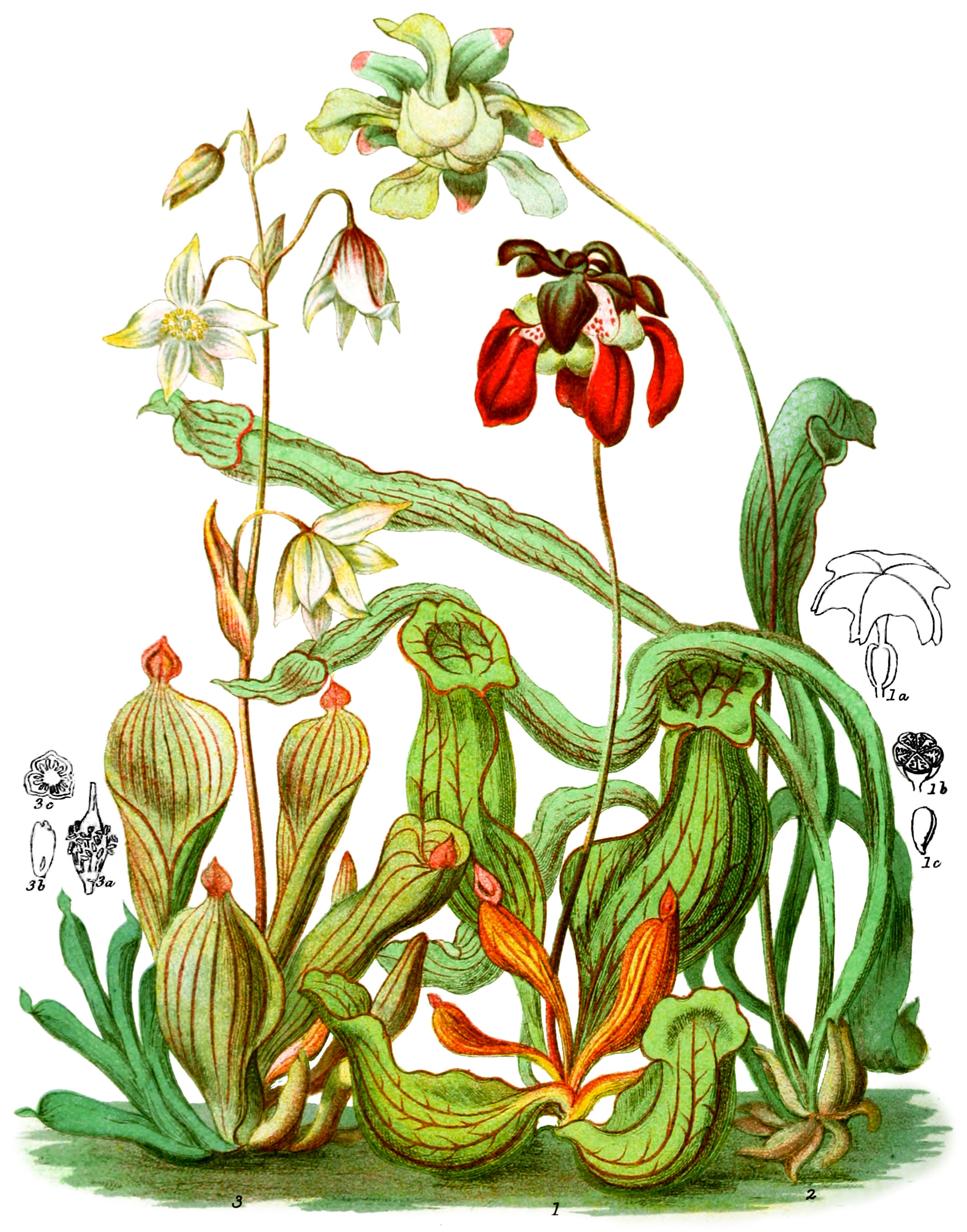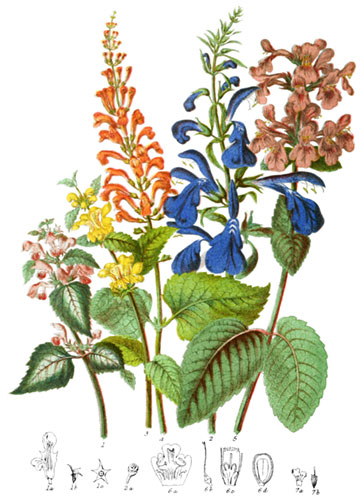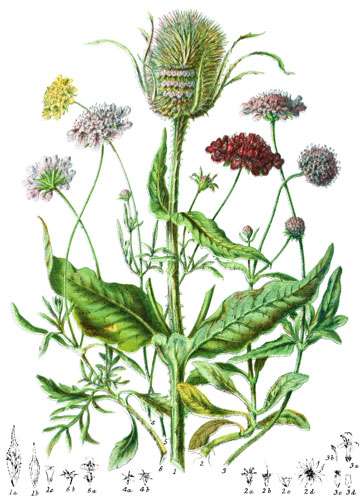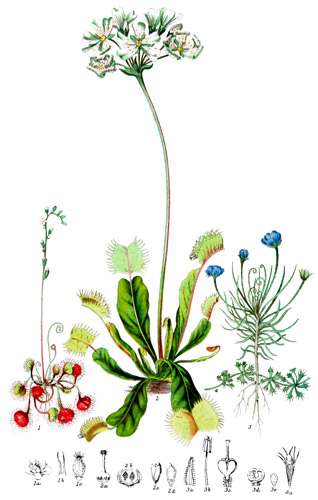Key characteristics
A few herbaceous, perennial plants, with fibrous roots, growing in bogs and swamps. The leaves are radical, having an enlarged tubular stalk, at the top of which the true leaf is articulated. The stem bears one or more flowers, usually of a herbaceous hue, seldom of a pure, bright colour, in some species white. The flower is composed of five concave petals, a calyx of five sepals, and sometimes a three-leaved involucre, as in Sarracenia (1); or it has a calyx of four to six sepals, much imbricated, and is destitute of a true corolla, as in Heliamphora (3). The stamens are many, attached to the base of the pistil; the anthers are oblong, two-celled, bursting internally and longitudinally. The ovary is globular, formed of five united carpels; the style is a simpel column, expanded at the summit into a large leafy plate, having a stigma at the five angles in Sarracenia; or the ovary is three-celled, with a simple style terminated in a truncate point in Heliamphora. The capsule contains numerous small seeds, slightly warted in those of Sarracenia, or winged with a brown membranous expansion in those of Heliamphora: they cover the slender divisions which proceed from the centre into each cell.
This Order has some affinity with Papaveraceæ on account of the dilated, foliaceous stigmas; the carpels and fruit agree in some respects with those of Nymphaceæ.
No useful properties have as yet been discovered in these plants.
Select plants in this order
Not all plants listed are illustrated and not all plants illustrated are listed.
- The parts of the flower are liable to great variety of condition; the deviation of Heliamphora from the general type of the Order is analogous to what occurs in the Crowfoot tribe, where Caltha varies in the same manner from the true Ranunculus type, having a calyx of coloured sepals, but not real corolla.
- The hollow stalks of the leaves of this tribe are of singular construction, and are lined with hairs of a peculiar nature, the physiological action of which is not yet ascertained. They have been found containing water, which it is supposed may be valuable to small animals and birds during the droughts in North America. They also entrap insects by means of the hairs. The leaves are said to shut over the hollow stalks like lids in dry weather, and thus prevent the evaporation of the water.
- Sarracenia was so named by Tournefort, after Dr. Sarrazin, a French physician residing in Quebec, who discovered this remarkable genus in Canada. Several species have since been found in the bogs of Carolina and Virginia.
- Sarracenia purpurea (1) was brought to England by Tradescant, in 1640; this, as well as other species, will flourish under cultivation, by making a kind of artificial bog of peat and moss, and keeping the plants well supplied with water to their fibrous roots.
- Sarracenia variolaris (2) has transparent glands at the back of the upper part of the hollow stalk.
- The leafy stigma was formerly considered an essential character of this tribe, but the discovery of Heliamphora nutans (3) by Sir Robert Schomburgk shows that opinion to be unfounded. In this flower the stigma is reduced to a mere termination of the style. The enlarged leaf-stalks of this plant bear an extraordinary proportion to the small leaf at the end; the hairs which densely clothe the mouth of the pitcher are perceived, when magnified, to be thick, conical, and striped; those which are scattered about the lower portion are smaller, and arise from a tubercle, appearing to be composed of a single cell forming a hollow tube, probably filled with a fluid when in a living state. The middle part is destitute of hairs, but often covered with numerous minute glands. These curious hairs and glands doubtless perform an important function in the economy of the leaf, and thus of the whole plant; but until observations have been made on living specimens no accurate knowledge can be obtained on the subject.
Locations
All the plants of this Order are inhabitants of the bogs of North America, with the exception of Heliamphora nutans, growing at an elevation of 6000 feet above the sea, in the marshy savannahs of Mount Roraima, on the borders of British Guiana.
Legend
- Sarracenia purpurea, Purple Side-saddle Flower. Canada.
- Pistil.
- Section of Ovary.
- Seed magnified.
- Sarracenia variolaris, Hook-leaved Side-saddle Flower. Carolina.
- Heliamphora nutans, Nodding Heliamphora. Guiana.
- Stamens and Pistil.
- Section of Seed magnified.
- Section of Ovary.
Explore more
Posters
Decorate your walls with colorful detailed posters based on Elizabeth Twining’s beautiful two-volume set from 1868.
Puzzles
Challenge yourself or someone else to assemble a puzzle of all 160 botanical illustrations.





